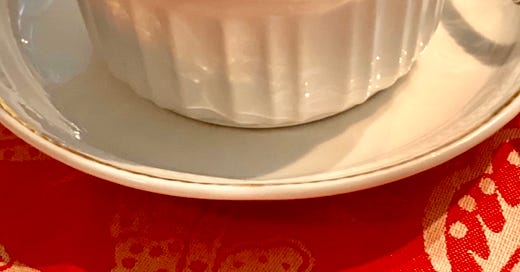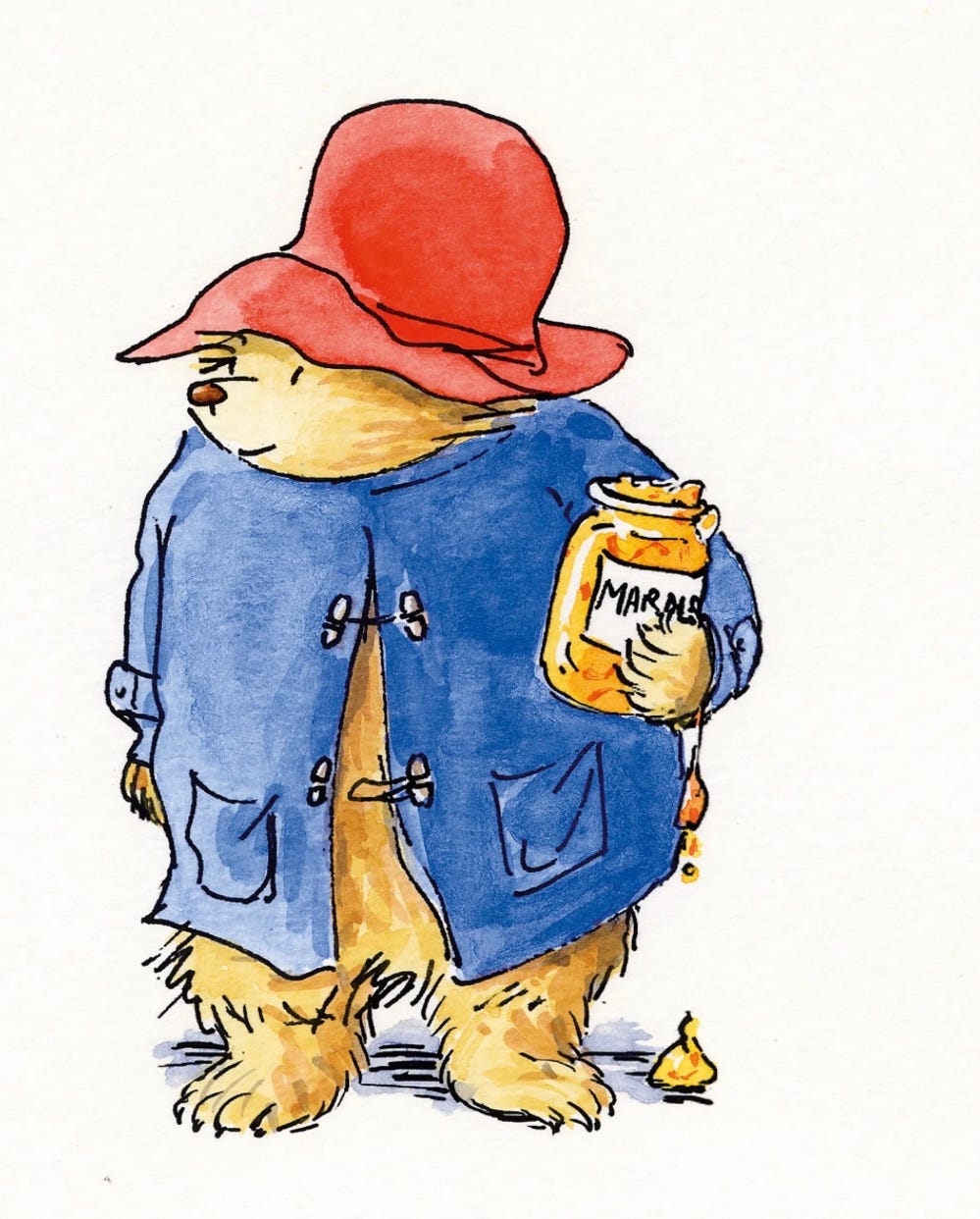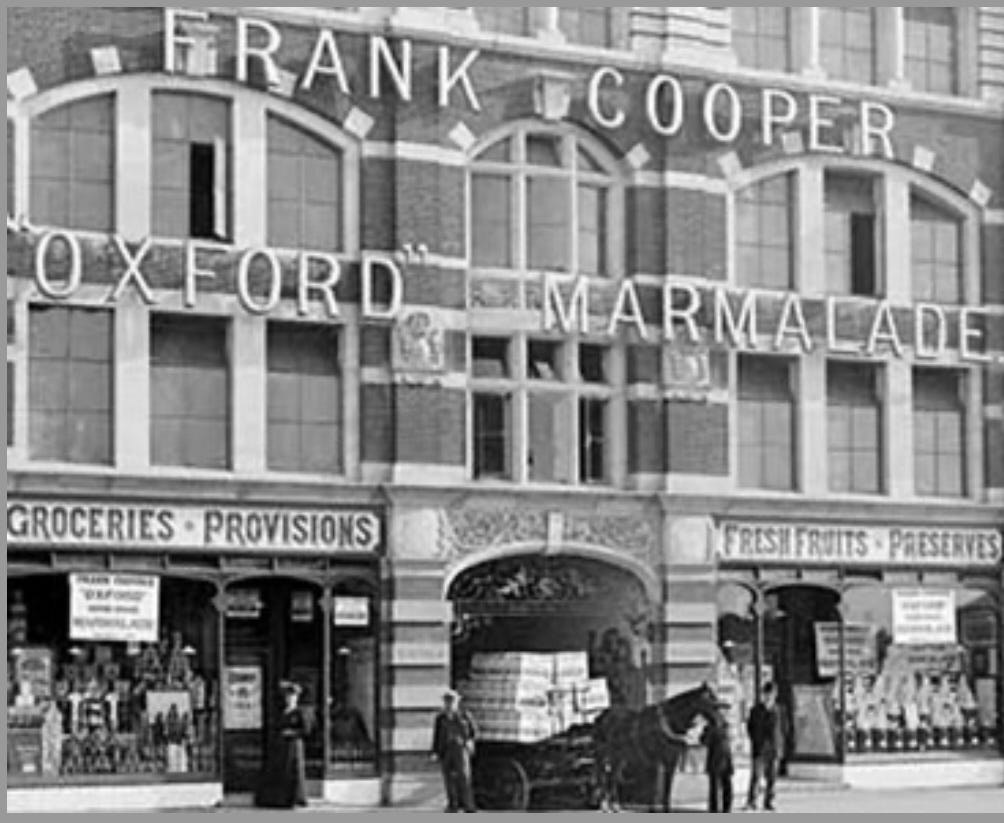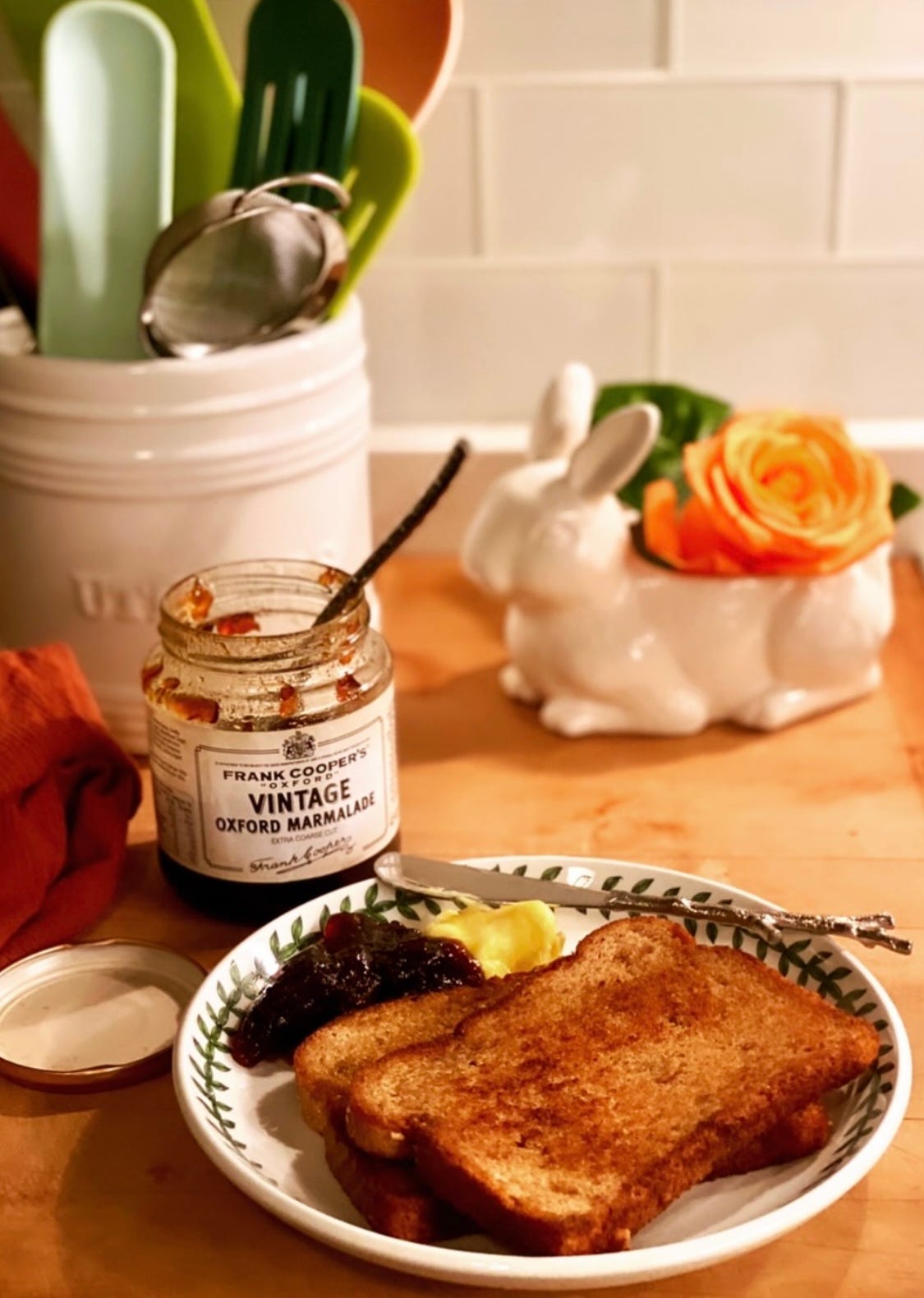How The Mundane Can Connect Us To The Marvelous
A Trip Through 150 Years of Literary Marmalade
In my last newsletter of 2022, I mentioned looking for and hoping to find fascinating rabbit holes to explore in the New Year.
I also hoped to find out why Alice was clinging to a jar of Orange Marmalade as she tumbled down hers.
I’m an American and was raised on Welch’s Grape Jelly. I am no expert on marmalade. But over the past few weeks I found myself thinking about marmalade, eating marmalade, baking with marmalade and talking to British friends about marmalade.
I asked my friend, Mike Sowden, to weigh in:
Orange Marmalade is absolutely an iconic British food, yes. At least for me. Marmalade is nature’s way of telling you you’re in Britain and that you should order more toast. Marmalade should be spread thickly, and, ideally, be chunky enough to be a bit chewy, so you occasionally get those little bursts of tangy bitterness as you bite into a bit of sugary rind.
To read more from Mike, here’s a link to his fantastic newsletter
.My initial curiosity about Alice took me to unexpected places— namely, books that I will forever think of as part of the “Library of Literary Marmalade” — and, I’d love to show you around. First up: Lewis Carroll’s 1865 classic, Alice’s Adventures in Wonderland.
Alice’s Disappointment
Spoiler: Alice’s jar of Orange Marmalade is empty.
In Chapter One, Down The Rabbit-Hole, Alice notices, among other things, bookshelves and cupboards as she’s falling. Carroll writes this:
She took down a jar from one of the shelves as she passed: it was labeled: “ORANGE MARMALADE,” but to her great disappointment, it was empty: she didn’t like to drop the jar, for fear of killing somebody underneath, so managed to put it into one of the cupboards as she fell past it.
The Rev. Charles Lutwidge Dodgson, aka Lewis Carroll, was a Mathematician who loved logic, wordplay and nonsense.
I’ve fallen headlong into The Annotated Alice where legendary editor Martin Gardner tells us:
Carroll was aware, of course, that in a normal state of free fall, Alice could neither drop the jar (it would remain suspended in front of her) nor replace it on the shelf (her speed would be too great).
The Mathematician Carroll is playing. What looks like random nonsense often turns out to be anything but. The book continues to fascinate more than 150 years after its publication, and I’m still looking for the answer to why he chose Orange Marmalade.
Paddington and His Marmalade
I reached out to terrific food writer and friend, Rachel Phipps (link:
) for any thoughts she had about marmalade:As a British person I can tell you that you can’t mention marmalade without mentioning Paddington Bear!
Indeed. The beloved bear would not have survived his sea journey to London without a suitcase full of orange marmalade.
Author Michael Bond initially wrote little stories that became chapters that became a book about the adventures of the talking bear who loved marmalade sandwiches. A Bear called Paddington was published in 1958. I’d not read it as a child, so loved reading it for the first time a few weeks ago.
In a Postscript written in 2001, the author tells us he didn’t write it with any age group in mind:
Anyway, I agree with Gertrude Stein: a book is a book is a book, and it should be enjoyed on all levels.
Last year, it was a truly sweet moment when the late Queen Elizabeth II at tea with Paddington on the occasion of her Platinum Jubilee, finally revealed to the world that the handbag she always carried on her arm, did, in fact, contain a marmalade sandwich. Now THAT’S iconic.
If you’d like to read more about Paddington’s lovely visit. Click: Here
A Little History
Before the final book of the ‘marmalade trilogy’, a little history from another friend I bothered with my marmalade obsession. Historian Dr.
has family roots in a town in Scotland closely tied to the history of marmalade.From Annette:
My family is from Dundee, Scotland, and I was raised knowing that orange marmalade was invented by candy store owner Janet Keiller, using a batch of bitter Seville oranges that somehow arrived in town.
Of course, this isn’t true, like most food origin stories that single out a lone inventor for credit.
Marmalade, in various spellings, comes from the Portuguese marmelada and refers to a sort of solid paste made from quinces. The word’s meaning has changed over time, but it gradually became the bitterish orange jam we spread on bread.
I think only Paddington eats it in sandwiches.
Poor Janet Keiller wasn’t even the first Brit to make orange marmalade as we know it, since it started to appear in recipe books in at least the 18th century. But Scots invented eating it on their breakfast toast and the English followed.
As for Janet Keiller? She may have invented the great coarse chunks of peel with which her name is still associated. She and her husband, Jim, certainly started the first marmalade company under their own name. It’s still around, but the marmalade is no longer made in Dundee.
Read more from Annette by subscribing to her fascinating, witty newsletter here:
The Spy Who Loved…Breakfast
Finally: While researching Alice and Paddington, I bumped into the pages of a third wildly popular book from a classic series. In the 1957 Cold War spy novel From Russia With Love, the author Ian Fleming writes:
Breakfast was Bond’s favorite meal of the day.
Who knew?
Fleming tells us that James Bond drank two large cups of black coffee “brewed in an American Chemex” — along with an egg and toast accompanied by jars of jam, honey and Frank Cooper’s Vintage Oxford Marmalade.
The creator of 007 had him smoking sixty cigarettes a day, but Fleming, who’d been part of Naval Intelligence during WWII, appears to have believed that spy work demanded a hearty breakfast, too.
Fleming also wrote the children’s classic, Chitty-Chitty-Bang-Bang, published posthumously in 1964.
Bond’s marmalade of choice has a rich history and a Royal Warrant. If you’d like to learn more of that history click: Here
Three Unforgettable Characters, One Iconic Food Item
Lewis Carroll, Michael Bond and Ian Fleming gave us three unforgettable characters. A talking bear, a dashing spy and the heroine of a dreamscape, all sharing this ‘marmalade link’ through time and literature.
The authors bring them and us to fantastic places with their words, and a simple jar of marmalade becomes part of the tale.
Food in fiction is a particular kind of special. Its mere presence in a story can carry worlds of memory for the reader.
Bond on the Orient-Express, Paddington on the journey to London and Alice tumbling into the unknown, all traveling with or en route to their marmalade.
We, on the other hand, only need to walk as far as our kitchens to grab a jar of it, connecting us to them, making the mundane marvelous.
And with that, we can again touch the wonder of their stories. 💫
For the Weekend: Orange Marmalade-Glazed Pound Cake
This recipe is from Melissa Clark. I loved it (I love bitter Orange Marmalade — it reminds me of Campari) and so did my taste testers. It’s easy to make and a perfect simple citrusy cake for January. I had it for breakfast several days last week. Bitter and sweet in perfect balance.
Recipe Link: Here
Thank you so much to Annette, Mike and Rachel. Have a great weekend, Everyone.
Jolene












I love how you put this: "Food in fiction is a particular kind of special. Its mere presence in a story can carry worlds of memory for the reader."
I love this, Jolene! I grew up eating marmalade because my dad was raised in Bermuda from the time he was a little boy -- so he had (has) a lot of British customs and preferences that might not have otherwise shown up in our Wisconsin household -- and of course, because anything Paddington loved as much as marmalade was something I wanted to eat, too 😉
My favorite marmalade now is the Mackay's Dundee Orange Marmalade from World Market. (My kids love Paddington as much as I did, so a jar lasts maybe two days in my house, if I'm lucky.)